Buying Guides November 01, 2021
When it comes to ATV and side-by-side transmissions there are as many ways to propel an off-road vehicle forward as there are names. Whether you call them ATVs, quads, four wheelers, UTVs or side-by-sides, the type of transmission you choose is often determined by how you will use the ATV or SxS UTV and your riding style and passion. From automatic off-road vehicles to off-road vehicles with gears or the popular CVT transmission, understanding the different types of UTV and ATV transmissions will help you find the right one for you.
The Continuously Variable Transmission, better known as a CVT transmission has become one of the most predominant ATV and SxS UTV transmissions since Polaris Industries popularized the design with their first ATV in 1985.
Polaris was already well versed in CVT technology through decades of industry-leading performance with their snowmobiles, the tunability, ease of use, simplicity and performance advantages of the CVT transmission were simply too good to ignore. Soon, Polaris was recognized as not only the pioneer of CVT transmission in the off-road industry, but the clear leader as well. Today, the CVT transmission is arguably the most popular amongst all types of users and in all kinds of applications, and Polaris continues to set the benchmark. Similar to an automatic transmission, the CVT transmission utilizes a drive and driven clutch system connected by a V-belt drive. The Continuously Variable design ensures the ATV or UTV is always in the “right” gear and the engine RPM is in the heart of the powerband to deliver optimum power to the ground at any speed and in every application.
The CVT Transmission is a popular ATV or UTV transmission choice for any user but is especially appreciated by rec/utility ATV and SxS vehicle owners.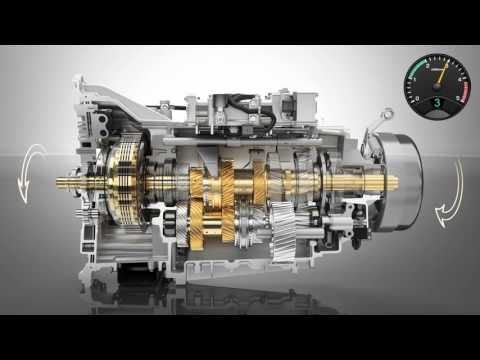 Ideal for slow vehicle precision or repetitive chores such as plowing snow, the simple accelerate and go architecture and ease of maintenance has made the CVT Transmission one of the most popular transmission types for just about any ATV and side-by-side rider. Hunters, outfitters, ranchers and landscapers love the smooth and predictable acceleration a CVT transmission delivers, even when the vehicle is loaded with cargo or occupants. What’s more, thanks to the CVT’s ability to always be in the “right gear” automatically, there’s no need to shift gears or find the sweet spot in the powerband when traveling over rugged terrain, mud or hills. Equally appreciative of the CVT transmission are recreational trail riders. With instant acceleration and optimum power always getting to the ground, the CVT transmission extracts maximum power and efficiency while delivering performance, fun and reliability in an easy to use design.
Ideal for slow vehicle precision or repetitive chores such as plowing snow, the simple accelerate and go architecture and ease of maintenance has made the CVT Transmission one of the most popular transmission types for just about any ATV and side-by-side rider. Hunters, outfitters, ranchers and landscapers love the smooth and predictable acceleration a CVT transmission delivers, even when the vehicle is loaded with cargo or occupants. What’s more, thanks to the CVT’s ability to always be in the “right gear” automatically, there’s no need to shift gears or find the sweet spot in the powerband when traveling over rugged terrain, mud or hills. Equally appreciative of the CVT transmission are recreational trail riders. With instant acceleration and optimum power always getting to the ground, the CVT transmission extracts maximum power and efficiency while delivering performance, fun and reliability in an easy to use design.
As the name implies, this type of ATV and UTV transmission requires the user to manually select the gears and actuate the clutch which disengages the power momentarily between the engine and the transmission.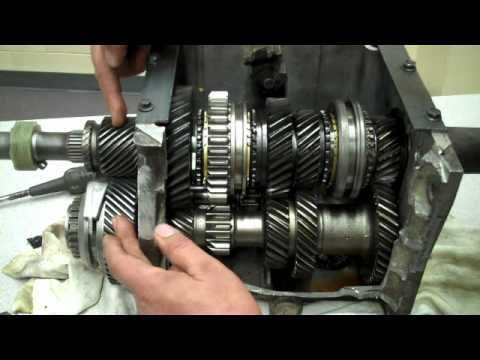 Often found on sport quads and sport side-by-sides, especially those designed for racing, a manual transmission can be very effective in getting maximum power to the ground but requires a higher level of driver experience and skill, especially in situations where multiple gear changes are required to maintain maximum power in challenging terrain. Unlike a Polaris CVT transmission, where optimum power and torque are automatically delivered, a manual transmission requires the driver to understand power curves and to manually select the “right” gear for any given speed and terrain.
Often found on sport quads and sport side-by-sides, especially those designed for racing, a manual transmission can be very effective in getting maximum power to the ground but requires a higher level of driver experience and skill, especially in situations where multiple gear changes are required to maintain maximum power in challenging terrain. Unlike a Polaris CVT transmission, where optimum power and torque are automatically delivered, a manual transmission requires the driver to understand power curves and to manually select the “right” gear for any given speed and terrain.
Similar to a manual transmission in a car, operation requires an understanding of an engine’s power band as well as a basic understanding of power flow from the engine, through the transmission and eventually to the wheels. Each gear in a manual transmission delivers a different ratio of mechanical advantage. The lower the number or gear, the greater the ratio advantage. First and second gear for example in a manual ATV or SxS transmission are geared for low speed, giving the engine a ratio advantage to get the ATV or UTV moving. To shift requires selecting the gear and releasing the clutch while gently applying throttle. As a rider “shifts” gears up or down, the clutch must be disengaged and engaged in partnership with reducing throttle and reapplying as each new gear ratio selection is made. This need to “synchronize" throttle, clutch and gear selection is what makes a manual transmission more difficult to learn and why a CVT transmission has become the most popular in the industry. When a manual ATV or SxS transmission is executed properly, it can be very effective in delivering maximum power to the ground with minimal loss, provided the user is a highly experienced operator.
First and second gear for example in a manual ATV or SxS transmission are geared for low speed, giving the engine a ratio advantage to get the ATV or UTV moving. To shift requires selecting the gear and releasing the clutch while gently applying throttle. As a rider “shifts” gears up or down, the clutch must be disengaged and engaged in partnership with reducing throttle and reapplying as each new gear ratio selection is made. This need to “synchronize" throttle, clutch and gear selection is what makes a manual transmission more difficult to learn and why a CVT transmission has become the most popular in the industry. When a manual ATV or SxS transmission is executed properly, it can be very effective in delivering maximum power to the ground with minimal loss, provided the user is a highly experienced operator.
A favorite amongst racers as well as experienced ATV or UTV riders who enjoy the additional user engagement and activity required by a manual ATV or UTV transmission.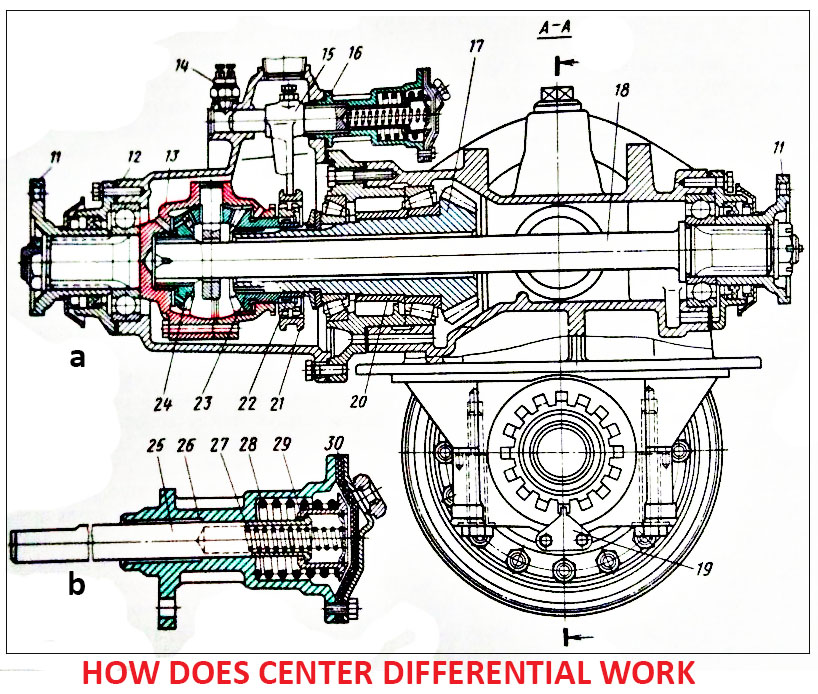 This is also a transmission found in early sport quad designs.
This is also a transmission found in early sport quad designs.
There are many types of automatic ATV or UTV transmissions, in fact a CVT transmission is also referred to as an automatic transmission. As a general rule, any ATV or SxS UTV that can automatically shift gear ratios either through a CVT transmission or a wet clutch transmission design is often referred to as an automatic ATV or SxS vehicle. In this type of automatic transmission, the user simply actuates the accelerator and a single wet clutch connected to the engine engages and delivers power to the rear wheels through a series of fixed gears. While the operation is similar from a user’s perspective to a CVT transmission, this type of automatic transmission is often found in lower performing ATV and UTV designs and lacks the tuning capabilities of a CVT transmission. This ability to tune and the high-performance capabilities of a CVT transmission are just two of the reasons why the technology continues to lead the industry and remains the preferred choice of off-road enthusiasts.
With a ride experience similar to a CVT transmission, the automatic transmission is popular with recreational and utility riders alike in both ATV and UTV applications. The simple operation makes it perfect for first time riders and new comers while still being a favorite amongst hard core enthusiasts.
Understanding the nuances between the different types of ATV and UTV transmission will allow you to select the right type of transmission for how you ride, where you ride and how you use your ATV or UTV. From CVT transmission to automatic ATV and UTV transmission designs to the gear and clutch attributes of a manual ATV transmission, there’s one that’s right for you.
There are many ways to propel ATVs and all similar off-road vehicles in the market today. The transmission type deployed by the manufacturer often points to the target audience they’ve got in mind with the product. What are the different types of ATV transmission, and how do they work?
What are the different types of ATV transmission, and how do they work?
ATV transmissions are mostly manual, semi-automatic, or automatic. Each of the transmission options can also have further variations. For example, some transmissions will shift from two-wheel to four-wheel drive or go from high to low gear, depending on the situation.
The rest of the article will look at the different types of ATV transmissions and how they work. Watch out for tips on how to choose an ATV with the best transmission for you.
In ATVs with a manual transmission, you have to choose the best gear for the situation. The lower gears are best selected for low traction scenarios, hauling heavy stuff, uphill climbs, and takeoff. The higher gears are best used when you’re cruising.
In a manual transmission setup, you have to disengage the engine from the transmission using the clutch stick before shifting between gears. Once the gear is locked in, you have to re-engage the engine by releasing the clutch.
So, in manual transmission, you have to control the clutch, the gear lever, and the throttle. If you’re on a hill, you may have to engage the brakes as well. The brakes here work like those on a motorcycle. The rear brake is operated by the right foot, while the front brake is controlled by your right hand.
This type of transmission also makes getting into or out of turns easier. Transmission shifting as you’re about taking a sharp turn can upset the balance of the ATV.
Some people shy away from ATVs with manual transmissions based on the knowledge of how difficult it is to manage manual transmission on motorcycles.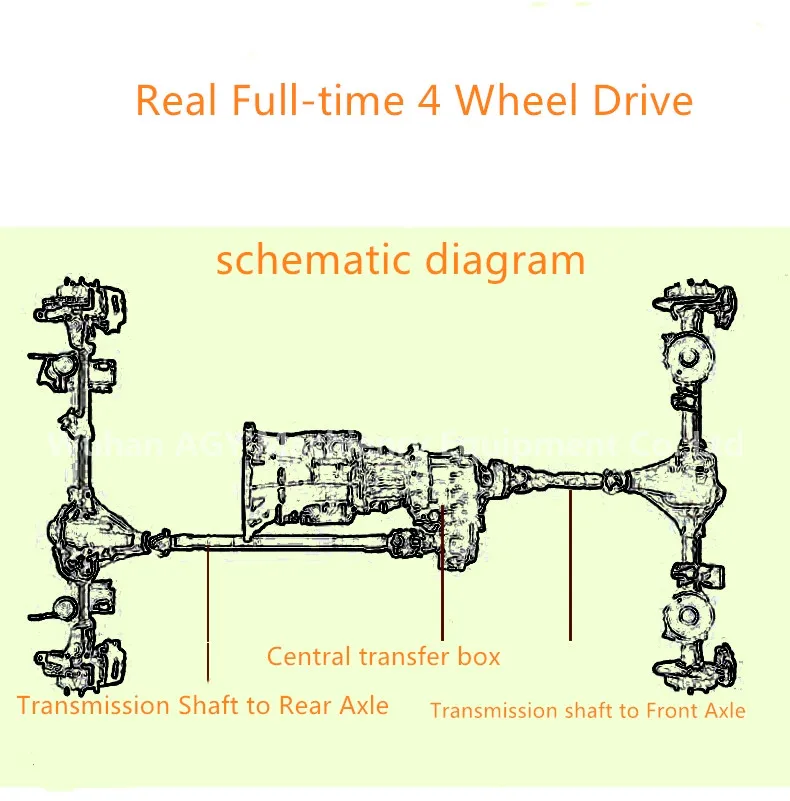
However, ATVs are different because the four wheels of the ATV means you don’t have to worry about keeping it standing while managing the clutch and gear at the same time.
If you already have lots of experience with manual motorcycles and cars, operating an ATV with a manual transmission should be straight forward.
Here’s a video showing how a small engine manual transmission works:
ATVs with semi-auto transmissions are similar to those with a manual transmission, but the main difference is in the operation of the clutch.
You still have to choose the optimum gear for the scenario, but the clutch doesn’t have a separate lever. The act of shifting gears automatically controls the clutch as well.
The act of shifting gears automatically controls the clutch as well.
With this setup, you’ll have one less thing to worry about while staying in control of the power generated by the engine. This type of transmission is also popular with sport ATVs.
It’s also deployed in vehicles made for inexperienced operators that are not yet experienced enough in gear selection but have a decent grasp of riding an ATV.
ATVs with automatic transmission are designed to handle gear selection for you, with the right gear chosen at the right time. This type of transmission is popular in utility ATVs, where the focus is more on the reason for riding the ATV, such as hauling, towing, or plowing.
Automatic transmissions in ATVs also work like what you get in cars, with some of them featuring levers that allow riders to shift between “hi” and “lo” gearing.
The system is based on centrifugal force. The foundation of the operation is based on the fact that the force moving away from the center of any spinning object will increase if the speed of rotation increases.
If the ATV is in “hi” gear, it will travel at speed much faster than normal, but it won’t generate enough power as it slows down. In “lo” gear, the max speed of the ATV reduces, but the amount of power generated at a lower speed increases greatly. In this scenario, you can haul or tow a lot more weight.
When discussing automatic ATV transmission, there are two main distinctions you’ll come across: CVT and wet clutch technologies.
Continuously Variable Transmission (CVT) is a transmission mode you’ll find in many adult ATVs. The design’s focus is to keep the engine within the best possible rpm range at all times. Once the engine is within this range, it will work more efficiently and produce the maximum power necessary for a given scenario.
ATVs with the CVT technology allow you to focus on maintaining stability and traction when on treacherous terrains or engaging in heavy-duty hauling or towing. You don’t have to worry about selecting the right gear for the situation.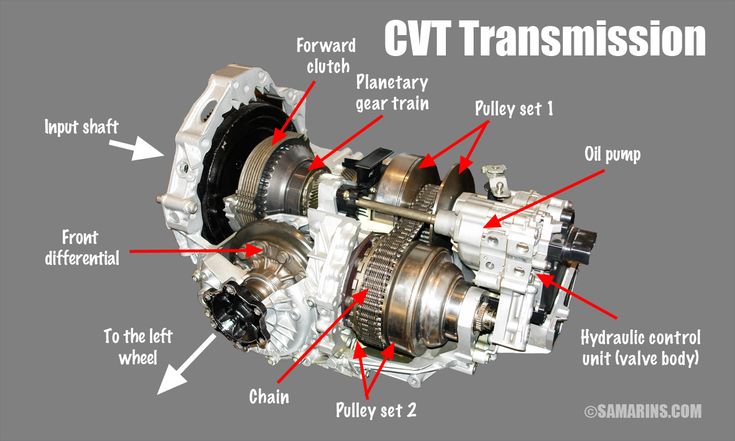
The CVT mechanism contains two pulleys held together by a V belt. The two pulleys act as built-in clutches that control and vary the drive ratio between the output and input shaft in a controlled, smooth and continuous manner.
With further increase in speed, the belt will ride higher inside the main clutch, leading to an increased gear ratio between the output and input shaft.
The secondary clutch in the system works similarly to the main clutch, but its main role is to ensure there is no slack within the V belt, especially while the main clutch opens and closes.
The secondary clutch’s other role is to connect to the output shaft and the rear wheels, usually through a drive shaft or a chain.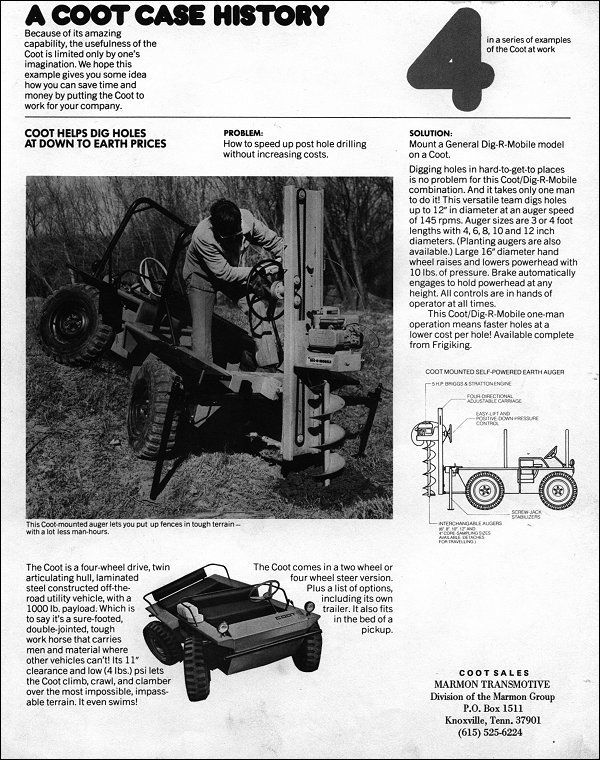
Here’s a cool video showing how a CVT transmission works:
The wet clutch approach to automatic transmission is less convoluted than the CVT technology. It is mostly deployed in four-wheelers made for new riders of teenagers.
The system incorporates one wet clutch, which is linked to the engine via a range of gears. The transmission is only engaged at specific preset RPMs.
Models with this technology only have a single speed and the option of reverse. There’s only one forward gear. This design means you can’t rely on ATV models with this transmission for heavy-duty use or navigating rough terrains.
They are best for new riders that are still learning how to control and handle an ATV without worrying about shifting gears.
We’ve seen how each of the transmissions you’ll find in an ATV work. To choose the right option for you, pay attention to how you intend to use the machine.
If you’re getting an ATV for leisurely adventure on the beach and some mild competitive sport, one with automatic transmission will work just fine for you.
However, if your ATV will double as a recreational and utility vehicle, you should seriously consider going for one with a manual transmission. If you must go with automatic transmission, it should be a powerful CVT variant that can handle everything you intend to throw at it.
If you’re in the market for an ATV that can help your teenagers learn how to ride, a model with a wet clutch is a good idea.
The various models of ATVs in the market come with transmission technologies tailored with specific audience segments in mind. With what you’ve learned thus far, you should be able to instinctively determine what type of transmission to go with any time you need a new ATV.
Experienced riders with the need for an ATV that can serve different (and often demanding purposes) will almost always choose a manual transmission. In contrast, casual or leisurely riders can get by with some types of automatic transmission.
Sharing is caring!
The primary purpose of an ATV gearbox is to transfer torque from the engine to the wheels as accurately as possible. The second important task of the transmission is to adjust the number of revolutions of the wheel by increasing the gear ratio.
That is, the faster you want to move, the higher you have to shift into gear. In the case of an automatic-type gearbox on an ATV, you still have to change gears, in particular, engage in reverse or choose between 2D or 4D drive. In low-cost models, including those made in China, the equipment is equipped with an automatic transmission, but more expensive sports ATVs are equipped with a fully manual transmission.
In low-cost models, including those made in China, the equipment is equipped with an automatic transmission, but more expensive sports ATVs are equipped with a fully manual transmission.
Contents
The mechanics are identical to the standard motorcycle and allow the driver to more accurately feel the moment of shifting gears at the optimum pace. As a result, such sports ATVs have better power and maneuverability. And when you're on the track, the power can be reduced by adjusting the gearing. And finally, the last advantage of a mechanical sports transmission is the ability to enter corners more comfortably. But try not to change gear directly during the turn, in which case you will lose balance. The 150cc gearbox is usually made as simple as possible, so you can not hope for excellent sensitivity and smoothness. The main advantages of mechanics on an ATV can be considered:
The main advantages of mechanics on an ATV can be considered:
Also, shifting gears on a similar gearbox is much easier than on a motorcycle, because such a technique has 4 wheels, which means that all the emphasis can be placed on gear shifting control. The movement on the mechanics is carried out similarly to other vehicles in the manual transmission, only when driving to a hill, you will have to simultaneously hold the clutch and brake.
Therefore, if you choose a model for the most dynamic and confident operation, pay attention to the type of transmission, mechanics will be the best choice.
Whereas manual ATVs are more for real riders and power lovers, the automatic transmission is more relaxed. The principle of its operation is similar to a car, where your task is only to shift gears. Automatic transmissions are most common on utility vehicles, the main feature being the choice between high and low gears. If you want to go fast, you will have to turn on high speed, but the disadvantage will be weak power. Conversely, at high power, the box will limit top speed. Buying an automatic shift ATV gearbox is recommended for kids or beginner riders who want to get comfortable and get used to the movement.
Automatic transmissions are most common on utility vehicles, the main feature being the choice between high and low gears. If you want to go fast, you will have to turn on high speed, but the disadvantage will be weak power. Conversely, at high power, the box will limit top speed. Buying an automatic shift ATV gearbox is recommended for kids or beginner riders who want to get comfortable and get used to the movement.
Let's give an example of the operation of a mechanical box, because it may differ in operation from other equipment. The main component is the gearbox, its power is transmitted from the second shaft with the variator pulley to the third shaft - the intermediate one. It is he who allows the box to continue working, transferring force to the last 4 shaft with the wheel mounted on it. All the described design details are located inside the protective casing, and the constant presence of oil in the system allows to increase the lifespan.
Try to keep an eye on its level, otherwise the transmission will break down soon. If you choose 250cc ATVs, the price with cardan will be a little different from others. In any case, you will have to consult with the seller, who will select the ATV for your needs.
How do you like the article?
ATV Club
August 21, 2014
Some Polaris Industries ATVs have a rather unusual all-wheel drive system. Sometimes they even say that they have a permanent 4x4. But is it?
There is a proverb in Russian that a spoon is good for dinner. I'm not sure that the Americans from Polaris heard it, but they built their all-wheel drive system for the modern Ranger family of auto ATVs that way.
I'm not sure that the Americans from Polaris heard it, but they built their all-wheel drive system for the modern Ranger family of auto ATVs that way.
Readers have already paid attention to the description of the all-wheel drive features of the Polaris Ranger 570 EFI tested in the last issue. And they asked me to tell you more about it.
AWD clutch parts. On the left - a magnetic element and a bushing, on the right - a fixing ring and an inner race with rollers in a separator
Cross section of the AWD mechanism. The rollers are dependent on 12 volts to the clutch
This type of drive is used by Polaris on both UTV Ranger and traditional Polaris ATVs.
The classic ATV all-wheel drive scheme with traditional plug-in all-wheel drive and front differential lock requires a lot of experience and skills from the driver. It is necessary to determine the moment of connection in time, stop for the manipulation itself, select the conditions for blocking the front gearbox, in addition, all these manipulations are performed manually.
How it works. Left: casters move freely - front axle disengaged; right: rollers locked in one position - front axle working off-road to hard ground mode. At the same time, off-road, AWD automatically provides a transmission condition similar to a locked four-wheel drive. The Ranger has a permanent drive rear, but the rear differential is blocked by moving the toggle switch on the dashboard to the middle position. In this position, the Ranger becomes like all other ATVs in 4x2 mode - that is, there is a rigid connection between both rear wheels.
To make the quadric all-wheel drive, the driver moves the same toggle switch to the highest position. You can do this on the go (with the gas off), the ATV remains fully controlled, with a light steering, and on hard ground, the inclusion of all-wheel drive is not felt. All the advantages of the AWD mode can only be appreciated when hitting off-road, when the rear wheels “overtake” the front ones by an imperceptible 1/8 turn, that is, as soon as they start to slip.